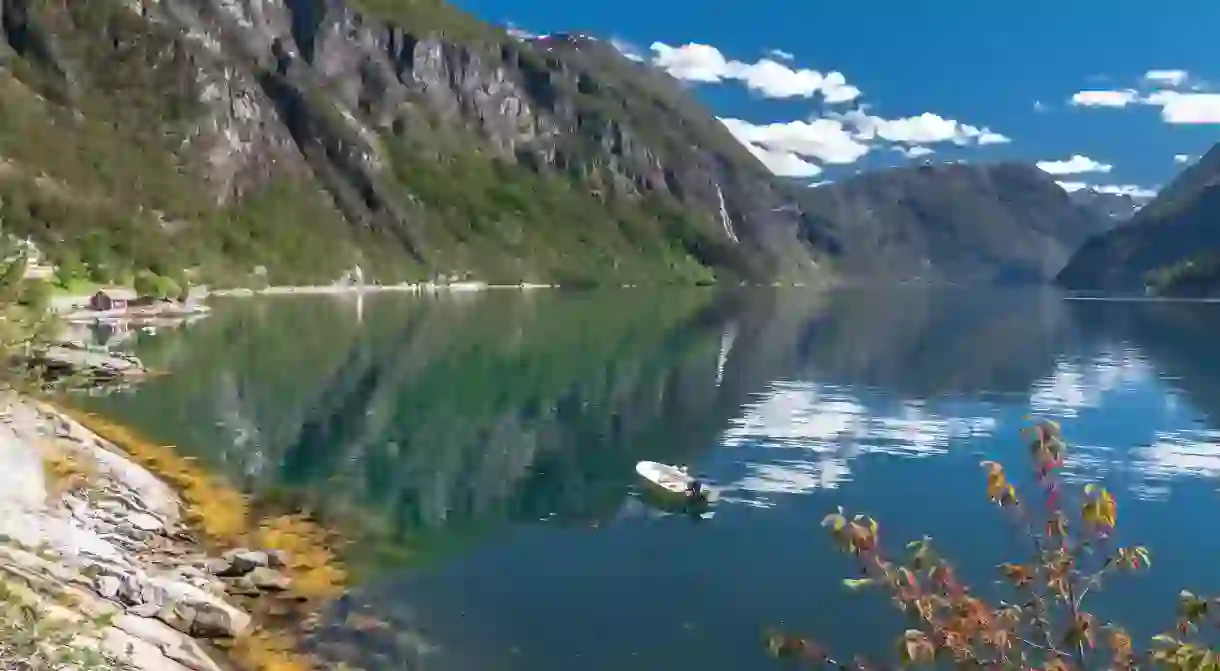A Solo Traveller's Guide to Norway

Travelling on your own can be a really rewarding experience. You are free to go where you want to go, see exactly what you want to see and sample the aspects of the culture that you are interested in. While it can be great to share moments with others, being by yourself can allow you to introspect, have a lazy day or even meet other people on your travels. With its famously beautiful nature and its small but characterful cities, Norway can be a great place to explore on your own.
Apart from the potential for experiences, Norway also scores points for its low risk of bad experiences. Norwegians live in one of the safest countries in the world, with some of the lowest levels of crime; a benefit for anyone, but particularly people travelling alone. They also speak some of the best English outside of native English-speaking nations, making it much easier to make inquiries, ask for help or start a conversation.
Navigating the Vastness of Norway
Because Norway is so huge, parts of the country have very low population levels and can be difficult to get to. When travelling alone, it may be easier and preferable to stay within relatively easy reach of a city or a decently-sized town in order to make use of public transport networks and hotels. This doesn’t mean that you have to miss out on Norway’s beautiful nature; it’s almost everywhere in Norway, and taking a bus or coach from one of the cities will easily get you into “proper”, unspoilt Norwegian nature.

Oslo and Bergen are the easiest cities to get to from abroad, but you can also look into flights to places like Stavanger, Trondheim and Tromsø. Coaches may be slow, but they are by far the cheapest way to get around this huge (and rather expensive) country. They can take you from the cities to smaller towns or regions such as Lofoten, Ålesund or Kristianssund, from where you can take local buses into magnificent, but still well-connected countryside without you risking getting lost in Norway’s vast wilderness.

Where to Stay
If you are looking to meet other people on your travels, it is a very good idea to stay at hostels, B&Bs, smaller hotels or shared living spaces, such as Airbnb flatshares. This might seem like an obvious point, but it is especially important to consider in Norway. While Norwegians will be very happy to help you out with specific questions or elements of Norwegian culture to you, there isn’t really a culture of being forthcoming and striking up casual conversations with strangers here. It is quite unlikely that a Norwegian would offer to show you around out of the blue, for example. They are not exactly a nation of small-talkers (unless you get them drunk). Staying with a (safe and certified) host rather than at a hotel gives you a chance to make a connection with local people that might be hard to make in other contexts.

When to Go
On a related note, unless you’re specifically coming here to go skiing, it is probably best to visit during the summer if you’re visiting the country on your own. While Norway can be very cosy in winter, with the snow outside and darkness falling early in the day, it is also a time where most Norwegians focus on family, good friends and cosying up inside – adding an extra challenge if you want to make connections with local people. There are simply more activities to take part in during the summer, from music festivals to group hikes, giving you a unique but safe and in-depth experience of the country.

Enjoying the Solitude
While you may not want to isolate yourself from all human contact, one of the most unique aspects of travelling alone is the opportunity to enjoy solitude, inner calmness and possibly attempt a little introspection. The Norwegian countryside lends itself to this and, as stated, you do not need to stray very far from the cities to encounter awe-inspiring nature. The cities and towns on the West Coast, with their close proximity to many of Norway’s most spectacular fjords, are great places to start. If a fjord seems difficult to get to with public transport, have a look at the many companies which arrange day-long sailing trips or “mini cruises” up the fjords. You should also by all means go hiking, but make sure to bring a map and that you take on a track which isn’t too out of your comfort zone. For more extreme hiking and other types of exploration, such as glacier hiking, you should always go with a guide.

Taking advantage of Norway’s more urban attractions, you can of course enjoy being able to spend as much time as you would like at cultural institutions like Norway’s best museums and galleries. But, for the ultimate setting for a bit of self-indulgence and introspection, you could also take advantage of Norway’s many spas and luxury retreats – many of which are located within easy reach of the cities but have the striking backdrop of Norway’s nature.
Featured image by Markus Trienke.













